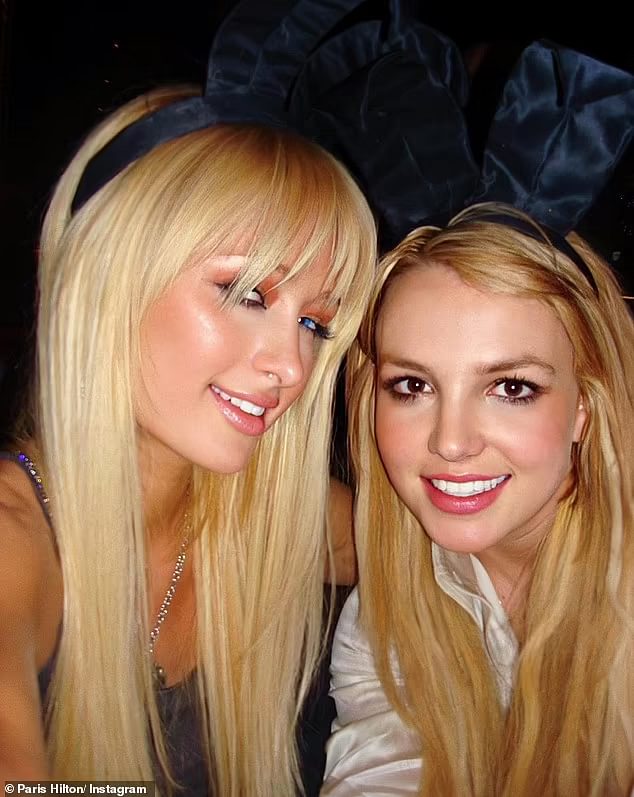
As an American literature teacher, I believe it is my solemn duty to introduce teenagers to disturbing but compelling texts like “The Yellow Wallpaper.” Fortunately, most of my students are fans, because, as they pointed out in their reaction papers, most of us love to witness a good psychotic break.
Two years ago, a student insightfully compared Charlotte Perkins Gilman’s narrator to Britney Spears, and I haven’t stopped thinking about it since. One of the reasons I love reading old stories is that they give us the opportunity to reflect on how far we’ve come as a society and how far we still need to go. Like many other millennial women, I’ve been captivated by the #FreeBritney movement of the past couple of years. I feel like I grew up with Britney Spears, and I have a lot of guilt over the way society treated her and the way I personally viewed her, until I remember that I, too, was a victim of the patriarchal propaganda machine that put Britney in her conservatorship. The machine worked exactly as intended, and I now realize that Britney’s response to what happened to her was how any sane person would respond to a complete loss of privacy, a messy divorce, an exploitative family, and postpartum/perinatal depression.
As I write this, I am recovering from COVID. After two years of close calls, it finally caught up with me, and my daughter and I are currently finishing up our respective quarantines. The pandemic brought “The Yellow Wallpaper” back to the forefront of literary meme culture (it’s totally a thing!), and I must admit I’m grateful there are no women in my walls begging me to let them out. Or are there?
Since becoming a mom, my television consumption has reduced drastically; once the kid goes to bed, I prefer not to break the silence in the house. However, COVID knocked me on my ass, so I had no choice but to see what Netflix had to offer. After watching Dolly Parton: Here I Am and weeping over how much I love that woman, the next recommended blonde bombshell documentary was Britney vs. Spears. I had previously watched Framing Britney Spears and Controlling Britney Spears, so I figured it wouldn’t hurt to round out the trifecta.
While I was down with COVID, Britney got married, an event marred by her ex-husband, Jason Alexander, whose only other recent claim to fame was his presence at the Capitol on January 6. For these two invasions, I hope he gets everything he deserves.
In spite of this, Britney’s wedding was a beautiful “blush and bashful” fairy tale (yes, I also watched Steel Magnolias while I was down with the ‘vid). I was intrigued by her celebrity friends in attendance, particularly Drew Barrymore, Selena Gomez, and Paris Hilton. All three of these women have dealt with fame and its high costs from early ages, so it’s no wonder Britney includes them as part of her inner circle.
In the early aughts, I remember a friend introducing me to a “celebrity fantasy league” website called Fafarazzi where you could draft tabloid staples to your team and earn points for how often they appeared in the news and in the blogs. I read Perez Hilton and Dlisted religiously to see what the likes of Britney, Paris, and Lindsay Lohan were up to, not considering for a moment how awful it would have been if cameras had followed me through my teens and early twenties.
It was hard to muster up any sympathy for these girls. They were young, rich, beautiful, and seemingly had no consequences for their wild behavior. I remember thinking Paris Hilton’s friendship was bad for Britney, even though I was less than sympathetic to Britney herself at the time. Those same feelings resurfaced in recent years any time I saw Paris comment on Britney’s Instagram.
In the aftermath of Britney’s wedding, the news came out that Paris had declined an invitation to DJ at the White House in order to attend the wedding. It was in a largely petty comment section where I stumbled across a sentiment that Paris, like Britney, had Been Through It. This led me to discover that Paris had produced her own documentary, This is Paris, in which she revealed details about her troubled past. Of course, in my quest to consume any and all blonde celebrity content during my quarantine, I had to watch it.
In This is Paris, we learn that a teenaged Hilton was sent to a progression of abusive boarding schools, the worst of which she escaped only by turning 18. When she left Provo Canyon School, Hilton explains that she was determined to create her own brand and become independently wealthy so that she wouldn’t have to depend on the family she no longer trusted. Thus, the Paris Hilton we all think we know was born. She turned her vapid party girl image into a character and then learned how to profit from this character, all the while dealing with a wealth of unprocessed trauma. We learn that Paris rarely sleeps because she is still haunted by nightmares from her days at Provo Canyon. We learn that she’s had numerous abusive relationships, and we also see her “sex tape” in a new light; after all, she was a teenager, still recovering from institutionalized abuse, and her “boyfriend” was thirty-two-years old. In today’s world, we’d call her a victim. In 2004, we called her a slut.
It can be difficult to sympathize with people who have grown up with so much privilege, but, as Gilman’s narrator shows us, being imprisoned in a mansion is still being imprisoned. I admire Hilton’s hustle, her vulnerability, and the way that she’s used her platform to shed light on these abusive institutions.
Society has failed Paris Hilton and Britney Spears in so many ways, yet they seem to be genuinely sweet people. I hope Paris and Britney find help for their trauma, although I can imagine that this would be a difficult task, given how both of them were traumatized by mental health “treatments” in the past. Similarly, Gilman’s narrator, who is confined, drugged, and infantilized by her husband, is convinced that the reason she doesn’t get better is because her husband is also a physician. How can you trust a doctor when doctors were the ones who exacerbated your mental health issues in the first place?
An' you thought I'd cry
You called me a dumb blonde
Ah, but somehow I lived through it
And you know if there's one thing this blonde has learned
Blondes have more fun

Still, the blondes are having fun again, and we love to see it. Here’s hoping they’ll find peace. If they don’t, at least they’ll have a whole gang of women to creep along with them on their journey.

